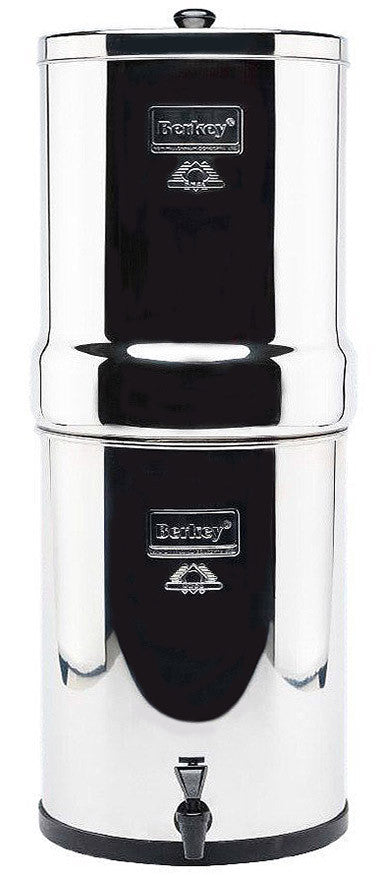
Atrazine is a chemical that significantly contaminates water. This herbicide is frequently used on corn, sugar cane, sorghum, non-specific herbicides, and other crops on industrial sites.
Atrazine is widely used today because it effectively reduces crop loss due to weed interference. Furthermore, it eliminates inter-row cultivation in sorghum and other crop fields.
Because of its popularity and well-renowned components, it has become a concern to water suppliers. Thus, manufacturers ensure the oil does not strongly absorb a long half-life of 60-100 days.
Atrazine controls weeds and is non-toxic to animals. The reason is that it impedes photosynthesis in vulnerable plants. However, a study showed a significant effect of Atrazine on an animal. A two-generation rat study found a mammary tumor that triggered an additional safety factor.
Results found in an MCL (maximum tolerated level) show that the atrazine has three parts per billion (ppb) or a total of the 5,000-fold safety factor. Most importantly, according to the EPA, this is the atrazine concentration, which gives safe drinking water to consumers for an average of the 70-year human lifespan.
Atrazine's acute oral toxicity in laboratory rats is 5,100 mg/kg. A probability of a 50% increase in death rates will occur if a 150-pound person digests 0.75 pounds of atrazine in a single dose, 2.5 ounces of aspirin. On the other hand, one-half pound of table salt would relatively produce the same probability of a person's death due to acute poisoning.
The effects will be severe if your drinking water is contaminated by atrazine. One of which is to experience or suffer from low birth weight. In addition, it also increases the number of illnesses in babies. So, they experience diabetes and cardiovascular diseases at an early age.
How Atrazine Affects Human Health
People live near various crops into which Atrazine is commonly injected. Chemicals contaminate these crops through water intake. Some people work in certain factories, which exposes them to Atrazine. As a result, they risk their health by acquiring serious illnesses.
Some scientists use different tests to protect people from the harmful effects of Atrazine. Chemicals harm a person's health. People learn or know if chemicals hurt them because they are absorbed, released, and used by the body. A sudden change in one's reproductive system is one primary indicator of whether atrazine has affected one's health.
Here are other effects of Atrazine when contaminated with water:

- Hormonal Irregularities for Women
According to a new study, women who drink water contaminated by Atrazine are more likely to have low estrogen levels and irregular menstrual flow. Women drink contaminated water that carries Atrazine. As a result, the fertility rate decreases significantly. Thus, it reduces the chances of women getting pregnant.
- Endocrine Disruption
Atrazine affects the hormonal system as it continues to grow. It delays puberty and changes the level of key hormones. Studies have shown that it converts testosterone to estrogen.
- Reproductive Effects
Atrazine distracts hormones. Exposure to herbicides can affect the reproductive system. It can increase the risk of miscarriage and a case of abdominal defects. It can also lessen male fertility and congenital disability.
- Cancer
It shows evidence that carcinogenic potential is growing when combined with atrazine. Exposure of the body to atrazine can cause risks of breast and prostate cancer. Take note that atrazine has carcinogenic properties.
Removing Atrazine in Drinking Water
Here are three options to choose from regarding removing atrazine from drinking water.

Using a Private Well Treatment
Treatment options are one way to remove or eliminate Atrazine from any water source.
Granular activated carbon filtration positively affects the increase in consumers' usage rate. It includes a point-of-use device (kitchen sink filter) or star treatment (by entry to homes or by well).
Ensure that any treatment system is used, recognized, and certified by a third-party testing organization that follows strict testing procedures established by the National Sanitation Foundation (NSF) and the American National Standards Institute (ANSI).
Treatment equipment works properly if carefully maintained. If Atrazine levels are high, it might not be that effective anymore. It is recommended that untreated water must be tested every three years, while treated water must be tested every year or once a year.
By Operators of Public Drinking System
Atrazine lessens by three parts per billion through granular activated carbon filtration. However, not all treatments are effective, and not all can remove all water contaminants in just one filtration process. Atrazine avoids contaminating water sources by flowing right off agricultural runoff.
Remember that wherever we go, we will always do everything to ensure the safety of our health. Having crystal-clear drinking water means we will also have a crystal-clear future.
← Older Post Newer Post →





